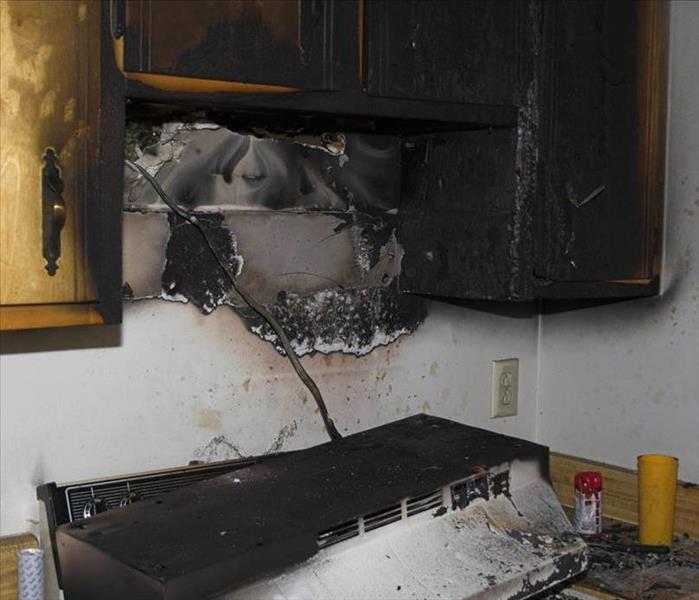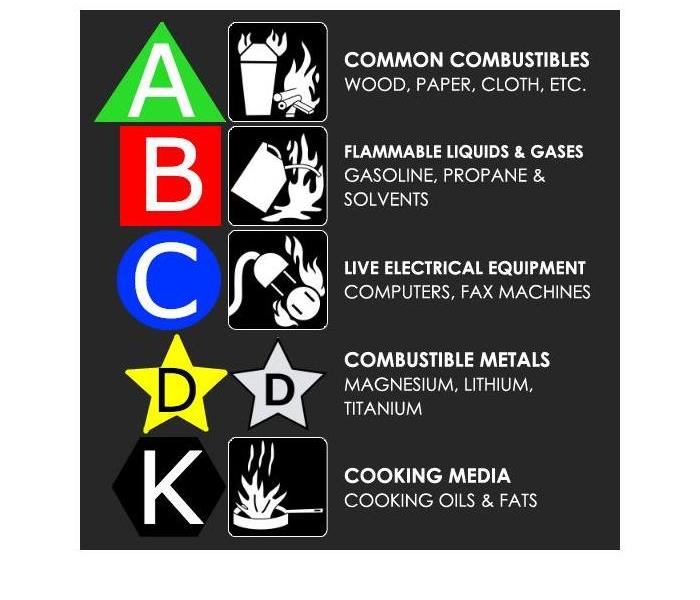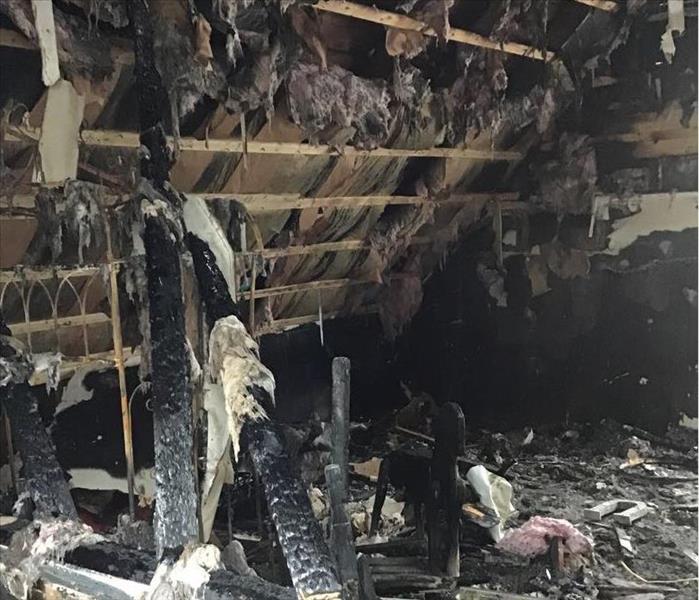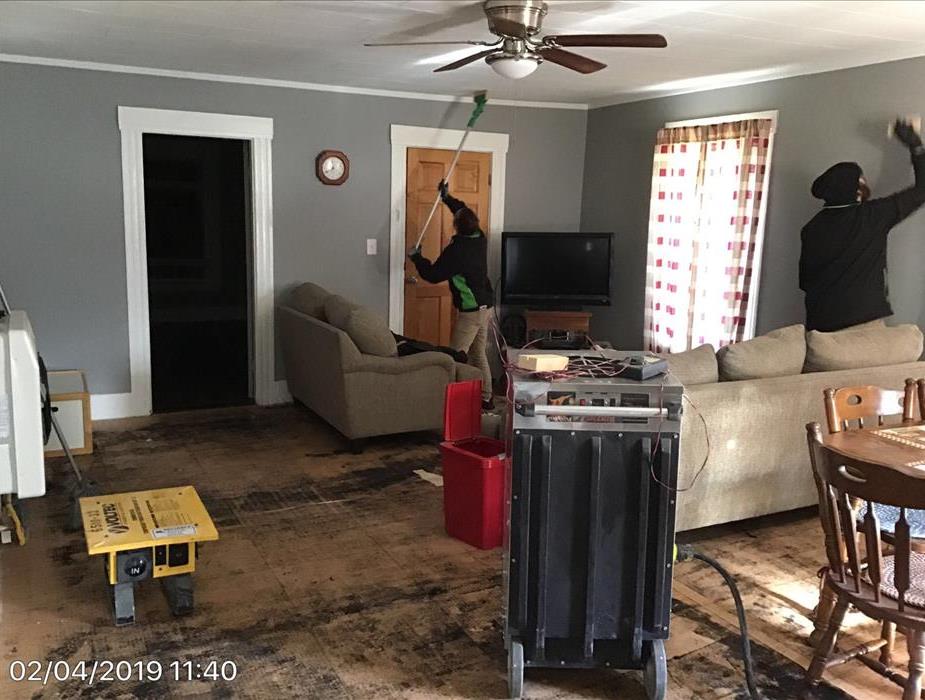Recent Fire Damage Posts
Leading Smoke odor Product
11/25/2022 (Permalink)
RECON Smoke Odor Sealer is a revolutionary solvent free smoke odor sealant and stain blocker designed to encapsulate malodors on several surfaces and block the toughest stains. RECON Smoke Odor Sealer with OdorLock technology is water based, permeable and is not flammable. Unlike most water based coatings that “wick” smoke odors and stains out of the substrate as they dry, RECON Smoke Odor Sealer with OdorLock technology prevents tough smoke odors and stains from migrating through the coating while maintaining its breathability. This technology provides one coat odor control on several surfaces and continues to block odors even with seasonal changes in temperature and humidity. RECON Smoke Odor Sealer (SOSTM) is your final step to encapsulate residual odors typically found on fire damage restoration projects.
Have Questions about Fire, Smoke, or Soot Damage?
Call Us Today (603)669-7733
RECON Smoke Odor Sealer is a revolutionary solvent free smoke odor sealant that encapsulates smoke odors on multiple surfaces. RECON Smoke Odor Sealer with OdorLock is water based, low VOC, low odor and is not flammable.
Permanently encapsulates smoke odors
Excellent stain blocker
Water based, non- flammable, low VOC
Exceptional application characteristics
Bonds to nearly any substrate
Easily top-coated, fast drying
RECON Smoke Odor Sealer is specifically designed to encapsulate malodors on multiple surfaces including:
wood,
brick,
concrete,
plaster,
plastic and
metal.
RECON Smoke Odor Sealer is fast drying and has exceptional application characteristics. RECON Smoke Odor Sealer is your final step to encapsulate residual odors typically found on fire damage restoration projects.
Fire Prevention and Safety Tips
10/1/2022 (Permalink)
Cooking and heating are the leading causes of home fires and fire injuries, and winter months are the peak time for fire-related deaths. With Fire Prevention Week Oct. 9-15 2022, it's the perfect time to review and practice fire safety
MINIMIZE YOUR RISK
When cooking, make fire safety a priority by keeping these tips in mind:
Stay in the kitchen while you are frying, grilling, boiling or broiling food
When simmering, baking or roasting, check the food regularly, remain in the kitchen while cooking and use a timer
Keep anything that can catch fire away from your stovetop
Heating is the second leading cause of home fires.
Keep all flammables, like paper, clothing, bedding, drapes or rugs, at least 3 feet from a space heater, stove or fireplace
Never leave portable heaters and fireplaces unattended; turn off heaters and make sure fireplace embers are extinguished before leaving the room
If you must use a space heater, place it on a level, nonflammable surface, like ceramic tile, not on a rug or carpet
Keep children and pets away from space heaters
When buying a space heater, look for models that shut off automatically if the heater falls over
Working Smoke Alarms Are a Must
About three out of five fire deaths happen in homes without working smoke alarms. Smoke alarms are a key part of a home fire escape plan providing early warning to reduce your risk of dying in a fire. The National Fire Protection Association recommends you:
Install smoke alarms on every level of your home, inside bedrooms and outside sleeping areas on the ceiling or high on the wall
Keep smoke alarms away from the kitchen, at least 10 feet from the stove, to reduce false alarms
Use special alarms with strobe lights and bed shakers for people who are hard of hearing or deaf
Test smoke alarms monthly
Replace batteries in your smoke alarm and carbon monoxide detector annually
Replace smoke alarms that are 10 or more years old
Make an Escape plan and practice it.
When and How to Use Fire Extinguisher
Always put your safety first; if you are not confident in your ability to use a fire extinguisher, get out and call 9-1-1.
- Everyone has left or is leaving the home
- The fire department has been called
- The fire is small, not spreading, and there is not much smoke
- Your back is to an exit you can use quickly
- You remember the acronym PASS:
Pull the pin.
Aim low at the base of the fire.
Squeeze the handle slowly.
Sweep the nozzle side to side
Residential Fire Damage.
6/1/2022 (Permalink)
 Residential Fire from a Home Fire Place.
Residential Fire from a Home Fire Place.
The picture to the right shows a fire that happened in a residential home cause by the fire place.
SERVPRO of Manchester was called to the rescue.
We started by putting containment up around the rooms directly affected by the fire to keep any hazards from the rest of the home. We then safely and securely cleaned and packed all the customers belongings that were able to be saved in boxes and took inventory on items that could not be saved by making an itemized list of content and taking photos of each item to report back to the insurance company, Once that was completed we use chem sponges and dry sponged the entire house to eliminate all soot and smoke damage to rooms that were not directly affected by the fire. After everything was dry sponged we then wet washed walls, trim, windows etc to prep for any painting that might need to be done. Once the rooms that were directly affected by fire are cleared by the fire department we will start demo by removing all affected materials. After all affected materials have been removed and the room is cleaned of any debris from demo we will smoke seal all remaining material. Smoke Seal helps with the odor that fire and smoke leave behind so once the new drywall, flooring and woodwork get replaced you do not have that lingering smell left behind.
SERVPRO of Manchester worked on this loss day after day until everything was completed in order to get customers back in their homes as quickly as possible.
Have Questions? Give SERVPRO of Manchester a Call at (603)669-7733
Different types of Fire Damage.
5/25/2022 (Permalink)
Smoke and soot is very invasive and can penetrate various cavities within your home, causing hidden damage and odor. Our smoke damage expertise and experience allows us to inspect and accurately assess the extent of the damage to develop a comprehensive plan of action.
Smoke and soot facts:
- Hot smoke migrates to cooler areas and upper levels of a structure.
- Smoke flows around plumbing systems, seeping through the holes used by pipes to go from floor to floor.
- The type of smoke may greatly affect the restoration process.
Different Types of Smoke
There are two different types of smoke–wet and dry. As a result, there are different types of soot residue after a fire. Before restoration begins, SERVPRO of Manchester will test the soot to determine which type of smoke damage occurred. The cleaning procedures will then be based on the information identified during pretesting. Here is some additional information:
Wet Smoke – Plastic and Rubber
- Low heat, smoldering, pungent odor, sticky, smeary. Smoke webs are more difficult to clean.
Dry Smoke – Paper and Wood
- Fast burning, high temperatures, heat rises therefore smoke rises.
Since each smoke and fire damage situation is a little different, each one requires a unique solution tailored for the specific conditions. We have the equipment, expertise, and experience to restore your fire and smoke damage. We will also treat your family with empathy and respect and your property with care.
Have Questions about Fire, Smoke, or Soot Damage?
Call Us Today – (603)669-7733
Electric Heater Safety-Preventing a Fire
12/15/2021 (Permalink)
 Fire damage due to electric heater.
Fire damage due to electric heater.
It is that time of year again when we pull out our space/electric heaters for added warmth. What you see in this photo was caused directly from an electric heater on the second floor of an attached barn. Luckily no one was hurt and SERVPRO of Manchester was able to go in, demo, mitigate the water damage from putting out the fire and clean up any debris.
We want you to be happy and safe this winter so here are a few simple safety tips while using an electric heater:
1. Only plug these heaters directly into a wall outlet. Do NOT use: extension cords, surge protectors, plug timers or G.F.C.I outlets.
2. Keep the heater on the floor, preferably not a rugged floor. Putting it on any furniture, table or other fixture increases the risk of it falling over or overheating possibly causing a fire.
3. Make sure the heater is always 3 feet away from any flammable object. This includes furniture, papers, curtains, pillows/bedding and even paint that is potentially flammable.
4. Though this happens way too often; Do NOT leave your heater on when no one is home. Consider this especially if you have pets that could possibly knock the heater over causing it to catch fire while you are out.
Stay safe and Happy holidays!
Fire safety
9/14/2021 (Permalink)
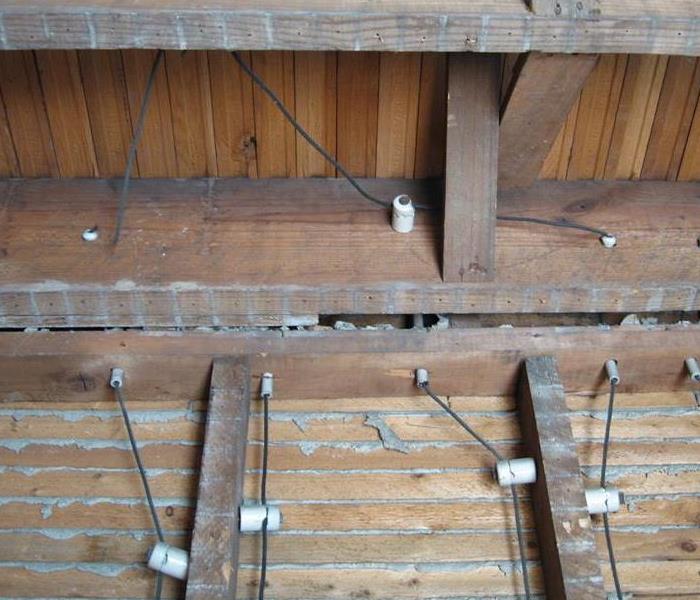 Example of knob and tube
Example of knob and tube
Two of the most frequent causes of fires we see is 1. Space heaters, and 2. Old antiquated electrical systems. For example knob and tube wire systems. Knob and tube wiring is defined as follows, “Knob and tube” is term that describes a system of residential wiring installed between 1900 and the 1940s in both city and country homes across North America. It was leading edge technology at the time, but is now regarded as too risky and dangerous to be insurable by some companies. The cost issued with changing out full wiring systems is extensive in most cases. We recommend consulting with a few local electricians and start developing a replacement game plan. In some cases this can be completed in stages. Again, nothing about this process is ideal but the effects from a fire can be far worse. Contact SERVPRO of Manchester with any of your restoration questions or needs!
Fire safety
5/27/2021 (Permalink)
 Space heater bedroom fire.
Space heater bedroom fire.
Although it is no longer that time of the year, Our most recent fire loss has inspired us to remind everyone of the hazards that may be faced when operating a space heater. These tips below will help lower the risk of a fire caused from a space heater. Note: The picture above was from a small space heater fire that ended up effecting 26 units throughout this entire appt building.
Space heater safety tips-
- Follow the 3ft rule- Keep your heater at least 3ft away from anything combustible including beds, sofas, blankets, curtains etc.
- Power cords- Be sure to inspect your space heaters power cords. Make sure it is not frayed or damaged in anyway.
- Hot to the touch- Do not use heater is the outside walls or power cord is hot to the touch.
- Smoke detectors- Make sure your smoke and carbon monoxide detectors are working properly.
- Turn it off- Make sure your unit is turned off when you go to sleep, a different room, or unable to keep an eye on it.
Lastly, in the event of any kind of fire damage call SERVPRO of Manchester, your preferred fire mitigation specialist.
603-669-7733
www.SERVPROmanchester.com
Fire Mitigation
5/24/2021 (Permalink)
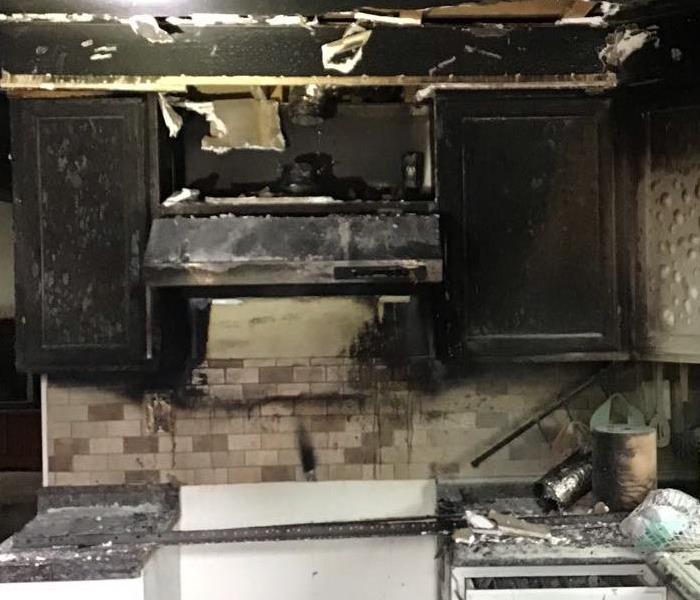 This is a pre mitigation photo of a kitchen fire.
This is a pre mitigation photo of a kitchen fire.
Since each smoke and fire damage situation is a little different, each one requires a unique solution tailored for the specific conditions. With this specific Fire loss we had to Demolish the entire first floor of this residence. When deciding how far to go with demolition we take multiple things into consideration. First and foremost, The health and safety of the residents is our priority. Our first step is inspection holes. We go through all affected areas and cut inspection holes large enough to pull samples of insulation and inspect all studs, sheathing and any internal electrical and plumbing components. Once we have validated the demolition of a room or specific structure we start looking at treatment. Treatment can include Deodorizing, O-Zone,Smoke sealing and more. Specific to this project we O-Zoned the entire house and smoke sealed all demolished structure. Any structure that did not need demolition was cleaned, When cleaning smoke affected structure typically the best method is a dry chemical sponge. Although some cases require alternate advanced cleaning methods.
When dealing with a fire loss call SERVPRO of Manchester, YOUR premiere mitigation and restoration specialists!
Fire damage specialist
3/10/2021 (Permalink)
SERVPRO of Manchester provides 50 years of experience which allows us to inspect and accurately assess the extent of the damage to develop a comprehensive plan of action.
Smoke and soot facts:
- Hot smoke migrates to cooler areas and upper levels of a structure.
- Smoke flows around plumbing systems, seeping through the holes used by pipes to go from floor to floor.
- The type of smoke may greatly affect the restoration process.
Different Types of Smoke
There are two different types of smoke–wet and dry. As a result, there are different types of soot residue after a fire. Before restoration begins, SERVPRO of Manchester will test the soot to determine which type of smoke damage occurred. The cleaning procedures will then be based on the information identified during pretesting. Here is some additional information:
Wet Smoke – Plastic and Rubber
- Low heat, smoldering, pungent odor, sticky, smeary. Smoke webs are more difficult to clean.
Dry Smoke – Paper and Wood
- Fast burning, high temperatures, heat rises therefore smoke rises.
Protein Fire Residue – Produced by evaporation of material rather than from a fire
- Virtually invisible, discolors paints and varnishes, extreme pungent odor.
Our Fire Damage Restoration Services
Since each smoke and fire damage situation is a little different, each one requires a unique solution tailored for the specific conditions. We have the equipment, expertise, and experience to restore your fire and smoke damage. We will also treat your family with empathy and respect and your property with care.
Have Questions about Fire, Smoke, or Soot Damage?
Call Us Today – 603-669-7733
Smoke and Soot Information
7/20/2020 (Permalink)
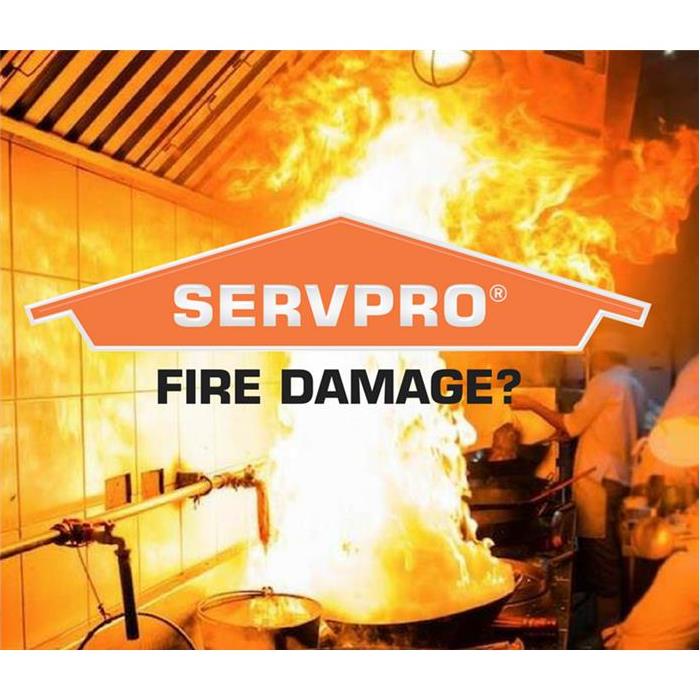 Smoke & Soot Damage
Smoke & Soot Damage
Smoke and soot is very invasive and can penetrate various cavities within your home, causing hidden damage and odor. Our smoke damage expertise and experience allows us to inspect and accurately assess the extent of the damage to develop a comprehensive plan of action.
Smoke and soot facts:
- Hot smoke migrates to cooler areas and upper levels of a structure.
- Smoke flows around plumbing systems, seeping through the holes used by pipes to go from floor to floor.
- The type of smoke may greatly affect the restoration process.
Different Types of Smoke
There are two different types of smoke–wet and dry. As a result, there are different types of soot residue after a fire. Before restoration begins, SERVPRO of Manchester-East will test the soot to determine which type of smoke damage occurred. The cleaning procedures will then be based on the information identified during pretesting. Here is some additional information:
Wet Smoke – Plastic and Rubber
- Low heat, smoldering, pungent odor, sticky, smeary. Smoke webs are more difficult to clean.
Dry Smoke – Paper and Wood
- Fast burning, high temperatures, heat rises therefore smoke rises.
Protein Fire Residue – Produced by evaporation of material rather than from a fire
- Virtually invisible, discolors paints and varnishes, extreme pungent odor.
Our Fire Damage Restoration Services
Since each smoke and fire damage situation is a little different, each one requires a unique solution tailored for the specific conditions. We have the equipment, expertise, and experience to restore your fire and smoke damage. We will also treat your family with empathy and respect and your property with care.
Have Questions about Fire, Smoke, or Soot Damage?
Call Us Today – 603-669-7733
Smoke and Soot Damage
6/26/2020 (Permalink)
Smoke and soot is very invasive and can penetrate various cavities within your home, causing hidden damage and odor. Our smoke damage expertise and experience allows us to inspect and accurately assess the extent of the damage to develop a comprehensive plan of action.
Smoke and soot facts:
- Hot smoke migrates to cooler areas and upper levels of a structure.
- Smoke flows around plumbing systems, seeping through the holes used by pipes to go from floor to floor.
- The type of smoke may greatly affect the restoration process.
Different Types of Smoke
There are two different types of smoke–wet and dry. As a result, there are different types of soot residue after a fire. Before restoration begins, SERVPRO of Manchester-East will test the soot to determine which type of smoke damage occurred. The cleaning procedures will then be based on the information identified during pretesting. Here is some additional information:
Wet Smoke – Plastic and Rubber
- Low heat, smoldering, pungent odor, sticky, smeary. Smoke webs are more difficult to clean.
Dry Smoke – Paper and Wood
- Fast burning, high temperatures, heat rises therefore smoke rises.
Protein Fire Residue – Produced by evaporation of material rather than from a fire
- Virtually invisible, discolors paints and varnishes, extreme pungent odor.
Our Fire Damage Restoration Services
Since each smoke and fire damage situation is a little different, each one requires a unique solution tailored for the specific conditions. We have the equipment, expertise, and experience to restore your fire and smoke damage. We will also treat your family with empathy and respect and your property with care.
Have Questions about Fire, Smoke, or Soot Damage?
Call Us Today – 603-669-7733
What is Fire Restoration Cleaning?
5/5/2020 (Permalink)
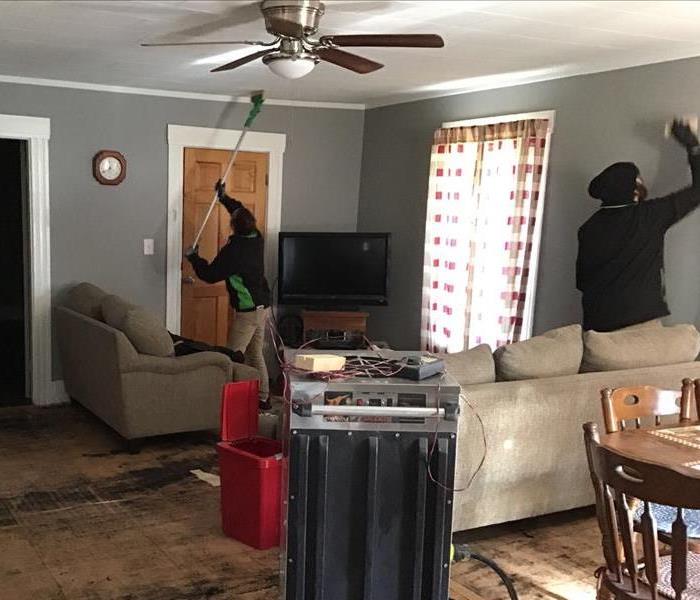 Cleaning Suit damage
Cleaning Suit damage
The fire damage restorer, the carpet cleaner, and the building maintenance janitor all perform cleaning. The restorer’s cleaning task, however, is slightly different from the task of the other two cleaning professionals. The restorer faces a unique situation—a building damaged by fire and smoke. The task is to remove the damage and return the building to the way it was before the fire. The industry describes this task as restoring the building to preloss condition. Cleaning to preloss condition means removing the effects of the fire damage. The restorer will remove smoke residues from interior and exterior surfaces of the building. The residues will often give off smoke odors, so the restorer must also deodorize to rid the building of the malodors. The fire possibly damaged some parts of the structure so badly they cannot be returned to preloss condition, so the restorer will dispose of structural items that are blistered by heat or charred by flame. Fire restoration cleaning is a unique form of cleaning in which the goal is returning items to a preloss condition. The restorer determines what items can be restored and what items must be replaced. The restorer identifies what items do not need any restoration and estimates the odds of restoring items that are questionable. The restorer will identify for the customer and insurance company any conditions that likely existed before the fire occurred, since fire restoration cleaning does not mean cleaning structure to a better condition than it was before the fire. Preexisting damages or conditions do not need to be addressed as part of fire restoration, but should be recognized and documented.
Smoke and Soot Damage
5/5/2020 (Permalink)
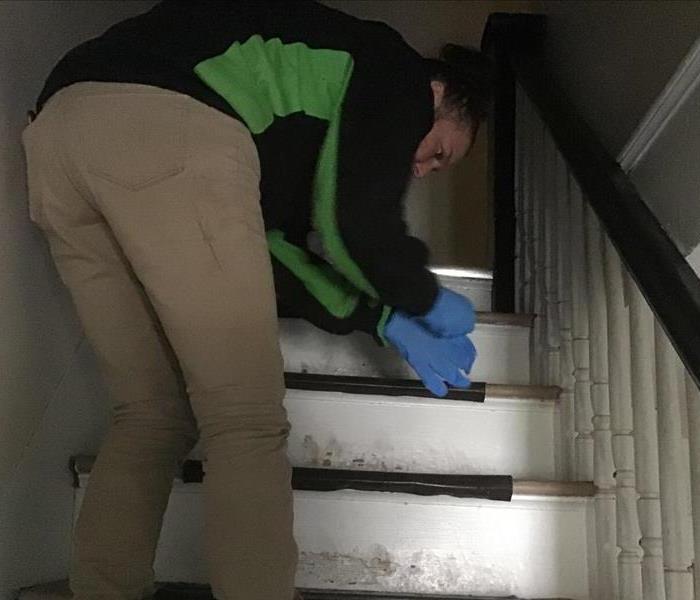 Cleaning Soot from stairs
Cleaning Soot from stairs
Smoke and soot is very invasive and can penetrate various cavities within your home, causing hidden damage and odor. Our smoke damage expertise and experience allows us to inspect and accurately assess the extent of the damage to develop a comprehensive plan of action.
Smoke and soot facts:
- Hot smoke migrates to cooler areas and upper levels of a structure.
- Smoke flows around plumbing systems, seeping through the holes used by pipes to go from floor to floor.
- The type of smoke may greatly affect the restoration process.
Different Types of Smoke
There are two different types of smoke–wet and dry. As a result, there are different types of soot residue after a fire. Before restoration begins, SERVPRO of Manchester-East will test the soot to determine which type of smoke damage occurred. The cleaning procedures will then be based on the information identified during pretesting. Here is some additional information:
Wet Smoke – Plastic and Rubber
- Low heat, smoldering, pungent odor, sticky, smeary. Smoke webs are more difficult to clean.
Dry Smoke – Paper and Wood
- Fast burning, high temperatures, heat rises therefore smoke rises.
Protein Fire Residue – Produced by evaporation of material rather than from a fire
- Virtually invisible, discolors paints and varnishes, extreme pungent odor.
Our Fire Damage Restoration Services
Since each smoke and fire damage situation is a little different, each one requires a unique solution tailored for the specific conditions. We have the equipment, expertise, and experience to restore your fire and smoke damage. We will also treat your family with empathy and respect and your property with care.
Have Questions about Fire, Smoke, or Soot Damage?
Call Us Today – 603-669-7733
How does SERVPRO react to a Fire Damage?
5/4/2020 (Permalink)
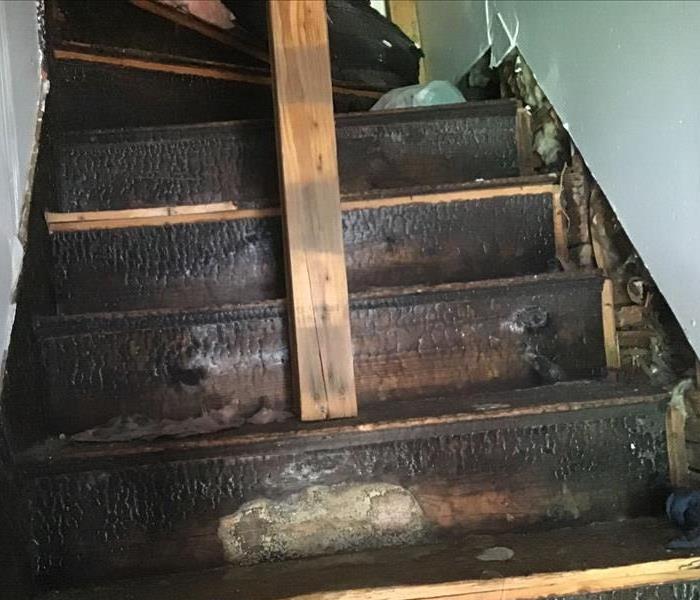 Stair fire
Stair fire
RECON Smoke Odor Sealer is a revolutionary solvent free smoke odor sealant and stain blocker designed to encapsulate malodors on several surfaces and block the toughest stains. RECON Smoke Odor Sealer with OdorLock technology is water based, permeable and is not flammable. Unlike most water based coatings that “wick” smoke odors and stains out of the substrate as they dry, RECON Smoke Odor Sealer with OdorLock technology prevents tough smoke odors and stains from migrating through the coating while maintaining its breathability. This technology provides one coat odor control on several surfaces and continues to block odors even with seasonal changes in temperature and humidity. RECON Smoke Odor Sealer (SOSTM) is your final step to encapsulate residual odors typically found on fire damage restoration projects.
RECON Smoke Odor Sealer is a revolutionary solvent free smoke odor sealant that encapsulates smoke odors on multiple surfaces. RECON Smoke Odor Sealer with OdorLock is water based, low VOC, low odor and is not flammable.
Permanently encapsulates smoke odors
Excellent stain blocker
Water based, non- flammable, low VOC
Exceptional application characteristics
Bonds to nearly any substrate
Easily top-coated, fast drying
RECON Smoke Odor Sealer is specifically designed to encapsulate malodors on multiple surfaces including:
wood,
brick,
concrete,
plaster,
plastic and
metal.
RECON Smoke Odor Sealer is fast drying and has exceptional application characteristics. RECON Smoke Odor Sealer is your final step to encapsulate residual odors typically found on fire damage restoration projects.
Assess the Damage from a Fire
5/1/2020 (Permalink)
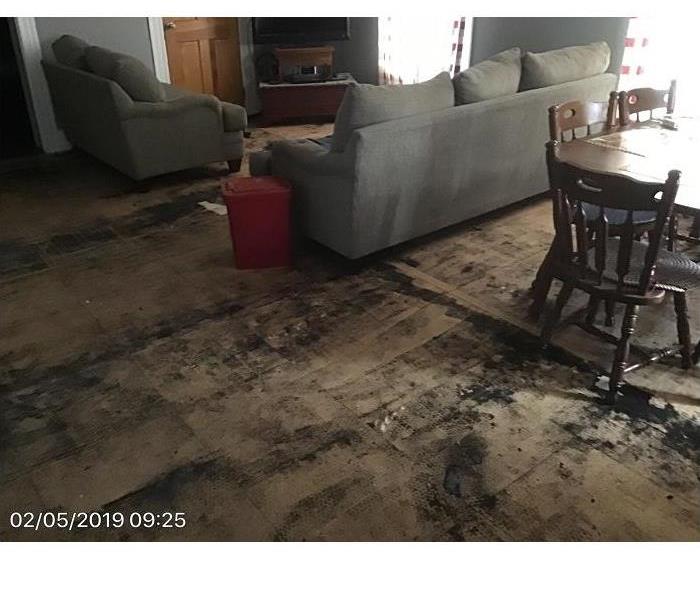 Before & After Fire
Before & After Fire
On a fire damage restoration SERVPRO of Manchester will do in the fire damage restoration process is to assess the extent of the damage in your property. This will usually involve looking at how far the fire, the smoke, and the soot have traveled as well as seeing how badly affected your walls and furniture have been.
This is an important first step as it is only by understanding the extent of the damage that the SERVPRO of Manchester will be able to come up with a plan of action and to give you an accurate quote for how much it should cost and an accurate estimate of how long it will take.
What does SERVPRO do after fire damage?
1/21/2020 (Permalink)
 This fire-damaged property was caused by a kitchen stove.
This fire-damaged property was caused by a kitchen stove.
RECON Smoke Odor Sealer is a revolutionary solvent free smoke odor sealant and stain blocker designed to encapsulate malodors on multiple surfaces and block the toughest stains. RECON Smoke Odor Sealer with OdorLock technology is water based, permeable and is not flammable. Unlike typical water based coatings that “wick” smoke odors and stains out of the substrate as they dry, RECON Smoke Odor Sealer with OdorLock technology prevents smoke odors and stains from migrating through the coating while maintaining its breathability. This technology provides one coat odor control on most surfaces and continues to block odors even with seasonal changes in temperature and humidity. RECON Smoke Odor Sealer (SOSTM) is your final step to encapsulate residual odors typically found on fire damage restoration projects.
RECON Smoke Odor Sealer is a revolutionary solvent free smoke odor sealant that encapsulates smoke odors on multiple surfaces. RECON Smoke Odor Sealer with OdorLock is water based, low VOC, low odor and is not flammable.
Permanently encapsulates smoke odors
Excellent stain blocker
Water based, non- flammable, low VOC
Exceptional application characteristics
Bonds to nearly any substrate
Easily top-coated, fast drying
RECON Smoke Odor Sealer is specifically designed to encapsulate malodors on multiple surfaces including:
wood,
brick,
concrete,
plaster,
plastic and
metal.
RECON Smoke Odor Sealer is fast drying and has exceptional application characteristics. RECON Smoke Odor Sealer is your final step to encapsulate residual odors typically found on fire damage restoration projects.
CEILING LAMP BURSTS INTO FLAMES
7/18/2019 (Permalink)
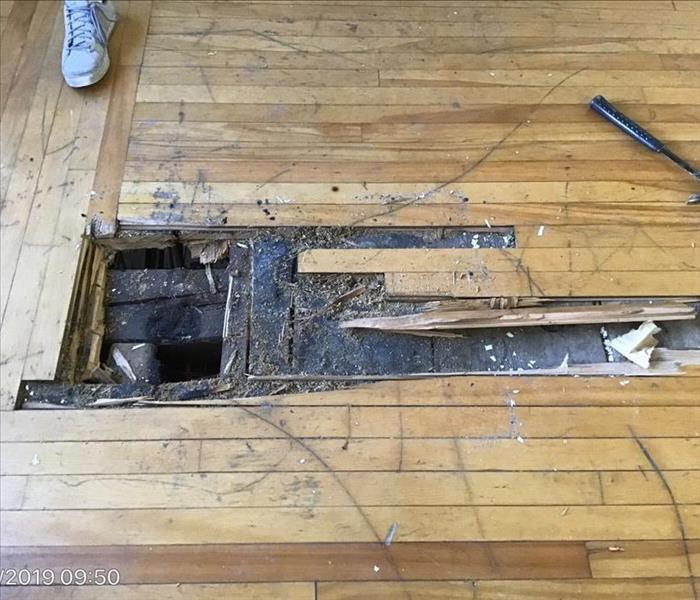 CEILING LAMP BURSTS INTO FLAMES
CEILING LAMP BURSTS INTO FLAMES
Anyone can be affected by fire damage in your home or business. Fire is the disaster that does not discriminate. It doesn’t matter where you are located, or even the age or condition of your home. There is always the unfortunate chance that a fire could occur for many reasons.
This picture shows residential fire damage in Manchester, NH. The cause of the loss was the ceiling lamp caught on fire and fell on the hardwood floor in the living room. The homeowner called SERVPRO of Manchester-East right after the fire department finished their job. SERVPRO of Manchester-East crew finished the whole fire damage restoration process in only a week. The homeowner was amazed by the result.
SERVPRO of Manchester-East is 24-hour emergency response and restoration service providers. SERVPRO has educated the insurance industry regarding the effect of prompt service, and Franchises provide a nationwide commitment to “1-4-8” response times. Contact the customer within one hour of notification. Begin work within four hours. Provide a preliminary scope and ScanER® update to the insurance adjuster within eight business hours.
Call SERVPRO of Manchester-East at (603)-669-7733
Residential property smoke damage
6/21/2019 (Permalink)
 Smoke damage restoration
Smoke damage restoration
The fire damage restorer, the carpet cleaner, and the building maintenance janitor all perform cleaning. The restorer’s cleaning task, however, is slightly different from the task of the other two cleaning professionals. The restorer faces a unique situation—a building damaged by fire and smoke. The task is to remove the damage and return the building to the way it was before the fire. The industry describes this task as restoring the building to preloss condition. Cleaning to preloss condition means removing the effects of the fire damage. The restorer will remove smoke residues from interior and exterior surfaces of the building. The residues will often give off smoke odors, so the restorer must also deodorize to rid the building of the malodors. The fire possibly damaged some parts of the structure so badly they cannot be returned to preloss condition, so the restorer will dispose of structural items that are blistered by heat or charred by flame. Fire restoration cleaning is a unique form of cleaning in which the goal is returning items to a preloss condition. The restorer determines what items can be restored and what items must be replaced. The restorer identifies what items do not need any restoration and estimates the odds of restoring items that are questionable. The restorer will identify for the customer and insurance company any conditions that likely existed before the fire occurred, since fire restoration cleaning does not mean cleaning structure to a better condition than it was before the fire. Preexisting damages or conditions do not need to be addressed as part of fire restoration, but should be recognized and documented.
How do we restore fire-damaged structure?
5/1/2019 (Permalink)
What Is Structure?
Structure is considered any part of a structure that is permanent. Items are called structure if they are permanently attached to a building. For example, the framework of a building including walls, ceilings, floors, attached floor coverings, doors, and windows are structure. Other items might be called structural components, such as cabinets, light fixtures, the heating and cooling system (HVAC), and bath fixtures. An easy way to distinguish structure from contents is to imagine turning the building upside down and shaking it; what falls out is contents and what remains is structure.
Methods of Structural Cleaning
Before cleaning structure, the restorer tests to determine the appropriate cleaning method. Appropriate means a method that will effectively remove the residues from the surface or material without damaging the surface or material itself. One goal of testing is to categorize materials as washable or non-washable: ? Washable: Materials that can be wet cleaned. Applying a waterbased cleaning product to the material will not damage the material. ? Non-washable: Materials that cannot be wet cleaned. Applying a water-based cleaning product to the material could result in additional damage, so the material must be cleaned by a dry cleaning method. The type of residues on a material may also determine the cleaning method. Oil- or grease-based residues will require a dry solvent cleaning agent, even though the material being cleaned would not be damaged by water-based products
What Is Fire Restoration Cleaning?
5/1/2019 (Permalink)
The fire damage restorer, the carpet cleaner, and the building maintenance janitor all perform cleaning. The restorer’s cleaning task, however, is slightly different from the task of the other two cleaning professionals. The restorer faces a unique situation—a building damaged by fire and smoke. The task is to remove the damage and return the building to the way it was before the fire. The industry describes this task as restoring the building to preloss condition. Cleaning to preloss condition means removing the effects of the fire damage. The restorer will remove smoke residues from interior and exterior surfaces of the building. The residues will often give off smoke odors, so the restorer must also deodorize to rid the building of the malodors. The fire possibly damaged some parts of the structure so badly they cannot be returned to preloss condition, so the restorer will dispose of structural items that are blistered by heat or charred by flame. Fire restoration cleaning is a unique form of cleaning in which the goal is returning items to a preloss condition. The restorer determines what items can be restored and what items must be replaced. The restorer identifies what items do not need any restoration and estimates the odds of restoring items that are questionable. The restorer will identify for the customer and insurance company any conditions that likely existed before the fire occurred, since fire restoration cleaning does not mean cleaning structure to a better condition than it was before the fire. Preexisting damages or conditions do not need to be addressed as part of fire restoration, but should be recognized and documented.
What does SERVPRO do after fire damage?
5/1/2019 (Permalink)
Mitigation Services—The goal of mitigation is to secure the structure and prevent further damage. Mitigation could include boarding up openings to secure the structure, winterizing the plumbing to prevent frozen pipes, and establishing a temporary source of electricity to the structure. Structures that are wet due to fire-fighting procedures will need emergency drying to prevent secondary water damage.
Structural Cleaning Services—Cleaning of a fire-damaged structure focuses on removing smoke residues from a building’s structural components and deodorizing odors given off by residues. The restorer and adjuster consult and advise the property owner on which structural components can be cleaned and which cannot be cleaned. Repair or replacement is needed for components that do not respond to cleaning.
Contents Cleaning Services—Personal property within a residence, office, or other building must be cleaned of smoke residues. In some fire situations, the contents can be cleaned on the jobsite. Other situations require contents to be packed and moved to a separate location for cleaning and storage. Pack-outs could occur because a building is not secure or is too damaged for on-site cleaning.
Specialty Restoration Services—Restorers of contents often subcontract specialty cleaning of certain contents: electronics cleaning, dry cleaning of clothing, furniture refinishing, and cleaning of expensive artwork.
Reconstruction Services—In some fire situations, structural components may be damaged to the point they cannot be restored to preloss condition. The work of reconstructing and repairing fire-damaged structural components may require different skills than those of standard home remodeling. Fire damage restorers typically perform cleaning services while licensed general contractors provide reconstruction services.
Call SERVPRO of Manchester-East at (603)-669-7733
Do’s and Don’ts when you have fire damages in your property!
5/1/2019 (Permalink)
- Don’t attempt to wash any walls.
- Don’t attempt to clean carpet or upholstered furniture without first consulting a professional restoration service.
- Do place dry, colorfast towels or old linens on carpet and upholstered furniture to limit the potential for further damage.
- Do limit the movement in the house to prevent soot particles from being embedded into upholstery and carpets.
- Do keep hands clean. Soot on hands can impregnate upholstery, walls, and woodwork, causing more damage.
- If electricity is off, do empty the freezer and refrigerator completely and prop doors open. This prevents the food from leaving odors in the appliance.
- Do clean and protect chrome on kitchen and bathroom faucets, trim, and appliances with a light coating of lubricant.
- Don’t operate any electrical appliances or equipment until they have been cleaned and checked. Smoke residues can be conductive.
- Don’t send clothing with smoke residues to dry cleaners not experienced in cleaning fire-damaged garments. Inexperienced efforts may result in setting residues or odors.
- Do wash plants on both sides of leaves with water.
- If the HVAC system was operating during the fire, do change the furnace filter and tape folded pieces of cheesecloth over air registers
Smoke and Soot Information
7/16/2018 (Permalink)
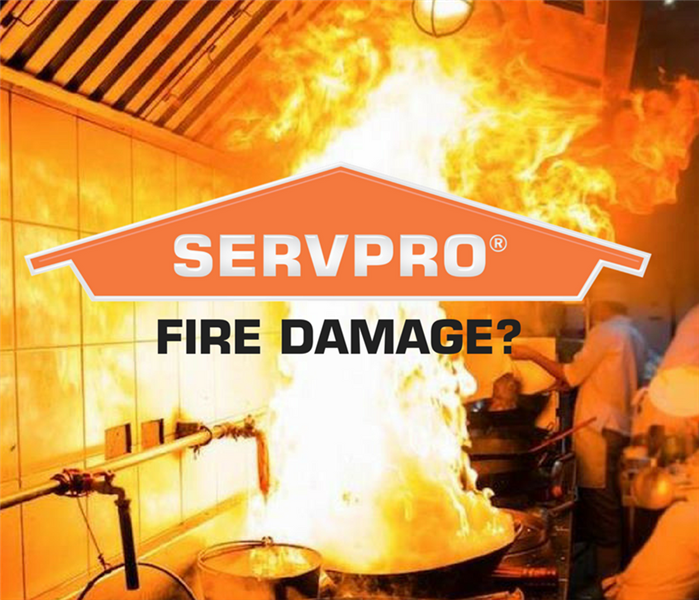 Smoke and soot damage
Smoke and soot damage
Smoke and soot is very invasive and can penetrate various cavities within your home, causing hidden damage and odor. Our smoke damage expertise and experience allows us to inspect and accurately assess the extent of the damage to develop a comprehensive plan of action.
Smoke and soot facts:
- Hot smoke migrates to cooler areas and upper levels of a structure.
- Smoke flows around plumbing systems, seeping through the holes used by pipes to go from floor to floor.
- The type of smoke may greatly affect the restoration process.
Different Types of Smoke
There are two different types of smoke–wet and dry. As a result, there are different types of soot residue after a fire. Before restoration begins, SERVPRO of Manchester-East will test the soot to determine which type of smoke damage occurred. The cleaning procedures will then be based on the information identified during pretesting. Here is some additional information:
Wet Smoke – Plastic and Rubber
- Low heat, smoldering, pungent odor, sticky, smeary. Smoke webs are more difficult to clean.
Dry Smoke – Paper and Wood
- Fast burning, high temperatures, heat rises therefore smoke rises.
Protein Fire Residue – Produced by evaporation of material rather than from a fire
- Virtually invisible, discolors paints and varnishes, extreme pungent odor.
Our Fire Damage Restoration Services
Since each smoke and fire damage situation is a little different, each one requires a unique solution tailored for the specific conditions. We have the equipment, expertise, and experience to restore your fire and smoke damage. We will also treat your family with empathy and respect and your property with care.
Have Questions about Fire, Smoke, or Soot Damage?
Call Us Today – 603-669-7733




 24/7 Emergency Service
24/7 Emergency Service
